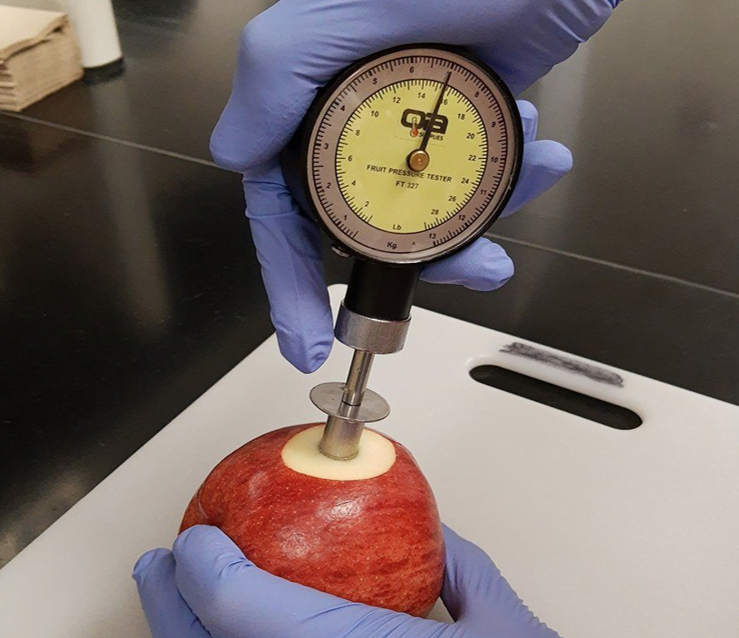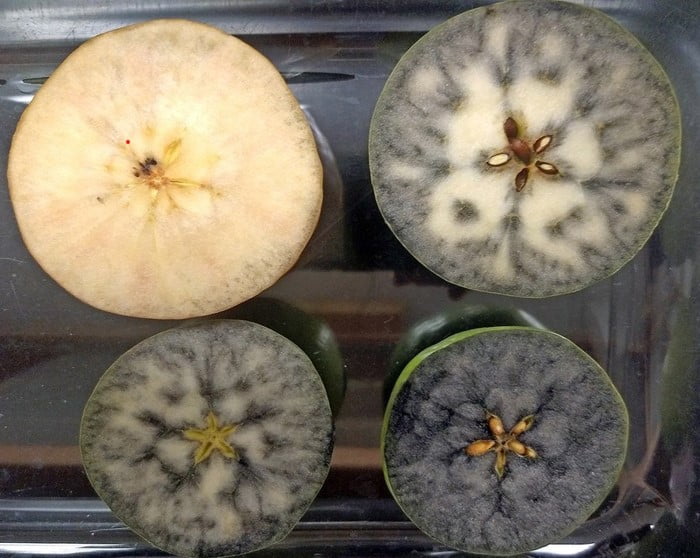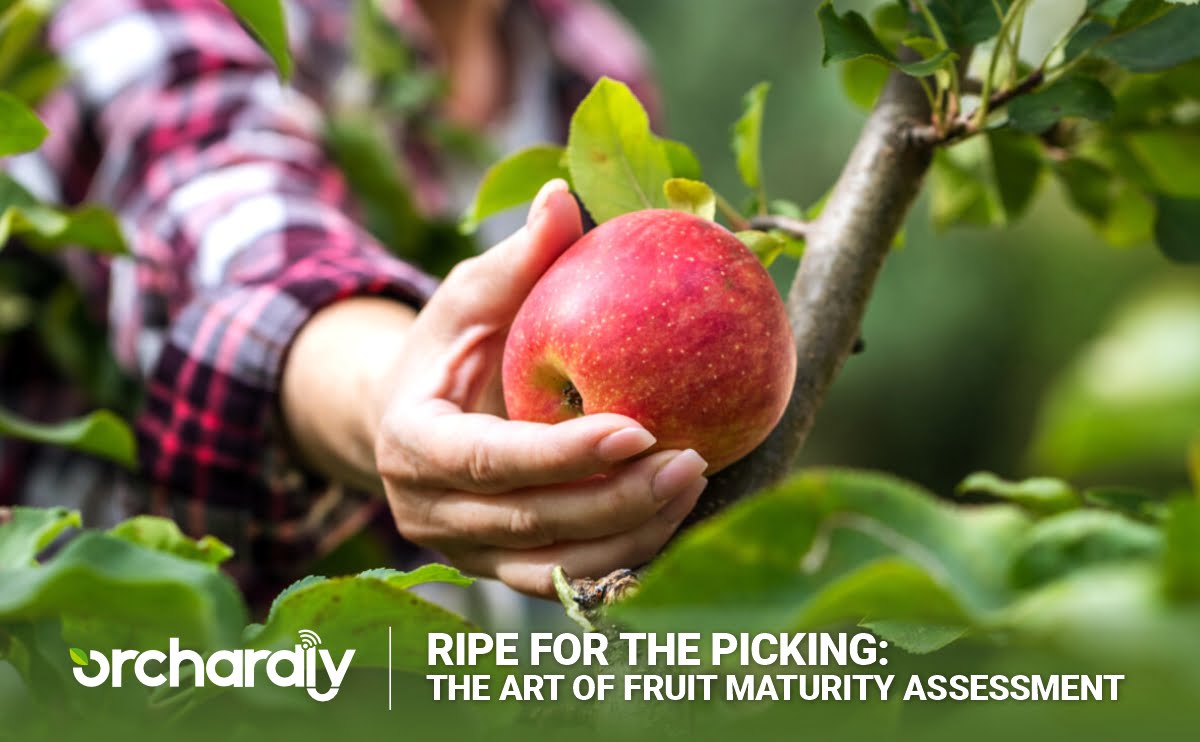Fruit maturity is the stage when the fruit is yet to start the ripening process but has the competence to do so. During the maturity stage, there is a gradual increase in fruit size. When a fruit reaches maturity, it is prepared for harvest. Although it might not be quite ready for immediate consumption at this point even if the fruit has attained its full size. The principles governing when fruit should be picked are essential to its later storage, marketable life, and quality.
Fruits should be harvested only when attain optimum maturity. Fruits that are harvested too early will have insufficient red skin coloration, low sugar contents (soluble solids), high acidity levels, and/or be prone to storage physiological disorders like bitter pit or storage scalds. They will also likely be small in size, flavourless, and/or have low sugar content. Also, fruits that are harvested too late will be overripe, which will result in the formation of an off flavour, high rates of softening, high susceptibility to damage and pathogens, a very short post-harvest life, and a higher possibility for the development of physiological diseases.
Each cultivar should be sampled separately; as fruit maturity can vary within the same orchard block as well as within the same tree. Select 5 to 8 trees per each block and per cultivar. The selected trees should be representative of the rest in the same block regarding crop load and vigor. Try to avoid choosing trees located in the borders of any block. The maturity of the apples can be assessed through different parameters. The maturity testing is started two weeks before the expected harvest date and continues till harvest and the most important and widely used maturity indicators kept into consideration in deriving the harvest timings are:
- Colour change
- Background colour
- Firmness
- Starch content
- Flavour
- Aroma
- Days after full bloom
- Soluble Solids Contents (SSC)
Colour changes
The requirements of fruits coloration will differ depending on the cultivar/ strain (solid red, striped red, green, or yellow). Changes in the surface (part of the skin-colored red) and background (part of the skin not colored red) color are important maturity indices.
The red colour is not necessarily an indication of maturation, the background colour, however, can be a good indicator. The fruit to be stored for long-term storage is to be picked from the trees when the background colour changes from green to yellow in most of the cultivars. For red coloured varieties, the percentage of surface red colour is used to determine its commercial grade. The colour requirements also vary within different varieties. The red colour in apples is affected by exposure to sunlight and is not necessarily the maturity indicator.
Fruit firmness
Fruit firmness is usually measured using a penetrometer. The fruit flesh becomes softer as it approaches maturity. The firmness influences the storage life of the fruits. Fruits with water core disorder should be avoided during this test as the affected fruits will show higher readings and may mislead our decision-making. The fruits selected for testing should be homogenous in size for more accuracy in measurements. Apples to be kept for long-term storage should be harvested with firmness of at least 15lbs.

Starch content changes
Starch in the fruit flesh is converted to sugars as apples mature and ripen. To determine the same, a simple starch-iodine test is done. The starch content test records the degree of starch disappearance in the flesh since starch concentration decreases as the fruit matures and ripens. The apples are cut horizontally into two halves and iodine solution is applied to the cut surface. As iodine binds to the starch molecules in the apple flesh, the cells turn blue-black. In contrast, the cells that contain sugar will remain unchanged. The common starch index rating system is scaled from 1 to 8 where 1 is full starch (all blue-black) and 8 is starch-free (no stain). Optimal harvest values for the starch test vary depending on the cultivar/strain and rating system used. In general, on a 1 to 8 scale, values ranging from 3-5 are recommended for harvesting apples for long-term storage, versus 6-7 for fresh market.

Flavour
Malic acid is the major acid in apple juice, and it plays a major role in flavour attributes. As fruits mature, their acid content decreases. The amount of acid present is related to the variety and its stage of maturity. However, apple acidity is not a frequently used maturity index because there are no recommended guidelines for maturity based on acid contents and also because it is cumbersome and needs a laboratory setup.
Aroma
Aroma is a complex mixture of many volatile compounds whose composition is specific to the apple variety. All the volatile compounds are of great importance for the complete characteristic aroma profile of apples. Their composition and concentration differ among varieties. Upon maturity, most fruits synthesize volatile chemicals as they ripen. Such chemicals give the fruit its characteristic aroma and can be used to determine whether it is ripe or not. These odours may only be detectable by humans when the fruit is completely ripe, and therefore has limited use in commercial situations.
Days after bloom
The number of days after full bloom can also be used as a reference to check fruit maturity. It is a useful maturity index to calculate probable harvest dates. The apple fruits become ready to harvest in 120- 140 days after full bloom depending upon the varieties. For this purpose, recording the date of full bloom in the spring season is very crucial.
Soluble Solids Contents (SSC) or Sugar Content Changes
Sugar content is also considered an important flavour attribute. As the fruit matures, starch is converted to sugars.The sugar content of apples will increase as the fruit matures and ripens. To measure the percentage of Brix, or sugar (soluble solids concentration), in a solution, a refractometer can be used. Fruit from trees with a heavy crop will have lower readings than fruit from trees with a light crop under similar growing conditions. Sugar content will be higher in years of reduced moisture availability, high temperatures, and high sunlight. Sugar content will also vary by fruit position within the tree and nutritional status. Fruits located in exposed areas to sunlight have higher soluble solids while heavily shaded and located inside the tree have low levels.

The above-mentioned indices can guide us better in making harvest and storage-related decisions. The importance of an indicator, as well as its measurement values, would vary as per the cultivar, storage facilities and the target market.
Apple maturity indices provide essential information on when to harvest apples to ensure they reach their peak flavor, texture, and overall quality. By using methods such as the starch index, firmness, sugar content, and color, farmers can make informed decisions to achieve the best results during the harvesting season that will be beneficial for both the farmers and consumers.


